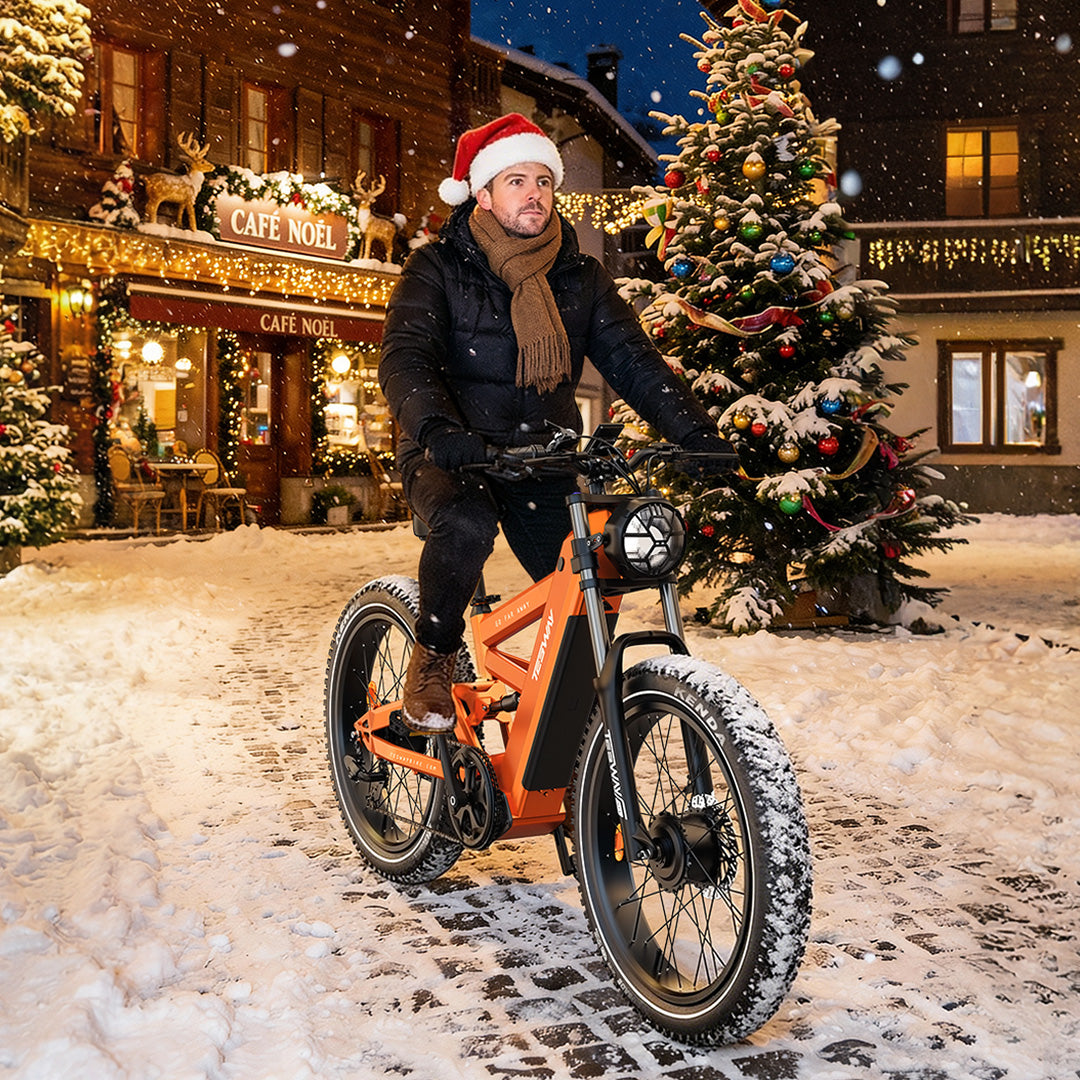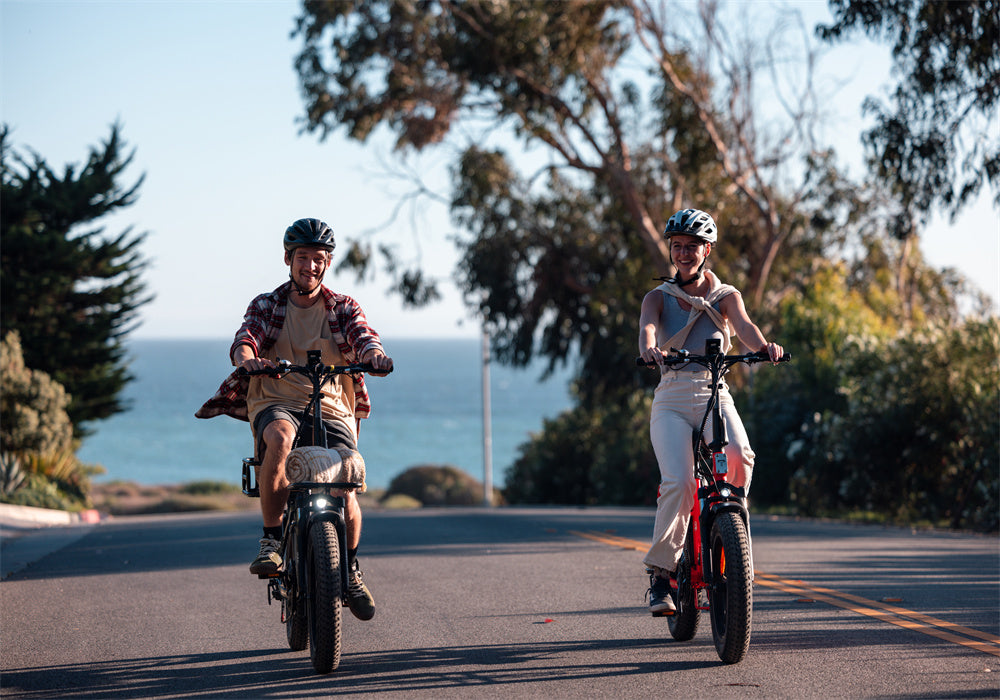In recent years, electric bikes have gained immense popularity among riders of all ages. This surge in demand is due to the practical benefits they offer, such as reduced physical effort, faster travel times, and eco-friendliness. But how do these modern machines actually work?
Electric Bike Work Like That
At the heart of every electric bike is its motor.
This motor is responsible for converting electrical energy from the battery into mechanical energy, which drives the bike forward.
Electric bikes typically have two types of motors: hub motors and mid-drive motors.
Each motor type has its advantages and is suited to different riding styles.
The motor works in tandem with the battery, which stores the electrical energy needed to power the bike.
This energy is then delivered to the motor through the bike’s controller, which acts as the brain of the system.
The controller manages the flow of electricity to ensure the motor operates efficiently, providing just the right amount of assistance to the rider.

Battery and Motor
Electric bike batteries are typically lithium-ion, the same type used in smartphones and laptops.
These batteries are lightweight, have a long lifespan, and can be recharged multiple times.
The capacity of the battery determines how far the bike can travel on a single charge, often referred to as its range.
Higher-capacity batteries allow for longer rides without needing a recharge.
Motors, on the other hand, come in different power ratings, usually measured in watts. More powerful motors provide greater assistance, making it easier to tackle steep hills or accelerate quickly.
However, higher power often results in faster battery depletion, meaning that balancing motor power and battery life is crucial.
SEE ALSO How to Ride an Ebike the RIGHT and EASY Way [Step by Step for Beginners]
How Pedal Assist and Throttle Modes Work
E-bikes generally operate in one of two modes: pedal assist or throttle. In pedal-assist mode, the rider must pedal the bike, and the motor provides additional power to make pedaling easier.
The level of assistance can often be adjusted, allowing riders to choose how much help they want from the motor.
This mode is great for extending battery life and getting some exercise while riding.
Throttle mode, on the other hand, allows the rider to control the motor with a twist grip or thumb lever, similar to a motorcycle.
In this mode, the rider doesn’t need to pedal at all, relying solely on the motor for propulsion. This option is convenient for those who want to take a break from pedaling or need a quick burst of speed.

Electric Bike Controllers
The controller is an essential component of any electric bike. It regulates the power coming from the battery to the motor, ensuring a smooth and efficient operation.
When the rider activates the throttle or starts pedaling, the controller measures the input and adjusts the motor’s output accordingly.
This prevents sudden bursts of power and ensures the bike accelerates gradually, offering a safer and more comfortable ride.
Modern e-bike controllers come with additional features, such as regenerative braking, which allows the battery to recharge slightly when the brakes are applied. This can help extend the overall range of the bike and improve energy efficiency.
The Role of Sensors
Electric bikes are equipped with various sensors to monitor the rider’s input and adjust the motor’s assistance.
These sensors can detect how fast the rider is pedaling, the pressure being applied to the pedals, and the bike’s speed. Based on this data, the controller can determine how much power to provide, creating a seamless riding experience.
One common type of sensor is the torque sensor, which measures the amount of force the rider is applying to the pedals.
The more effort the rider puts in, the more assistance the motor provides.
This makes for a more intuitive and natural riding feel, as the motor responds directly to the rider’s effort.
Braking Systems
Braking is another important aspect of e-bike functionality. Most e-bikes are equipped with disc brakes, which provide excellent stopping power, especially in wet or muddy conditions.
Some higher-end models also come with hydraulic disc brakes, which offer even better performance and require less maintenance compared to mechanical disc brakes.
In addition to traditional braking systems, many e-bikes feature regenerative braking, as mentioned earlier.
This system allows the bike to recover some of the energy used when slowing down, converting it back into electrical energy and storing it in the battery.
E-Bike Frames and Design Considerations
The design of an electric bike frame plays a crucial role in its performance and comfort.
E-bike frames are typically made from lightweight materials such as aluminum or carbon fiber to balance strength and portability.
The frame must be sturdy enough to support the additional weight of the motor and battery while still providing a smooth ride.
Many e-bikes also come with suspension systems, especially for off-road models. These suspensions help absorb shocks and bumps, making the ride more comfortable over rough terrain.
For city riders, a rigid frame may suffice, but for those looking to tackle trails, a full suspension system can greatly improve the experience.
How to Choose the Right Bike
When shopping for an electric bike, it’s important to consider your riding style and what you’ll be using the bike for.
If you plan on commuting in the city, a lightweight e-bike with a smaller motor and a longer-range battery may be ideal.
However, if you enjoy off-road adventures, a more powerful motor and robust suspension system will be essential.
There are also foldable ebikes available for those who need to store their bike in small spaces or take it on public transportation.
These models are compact and easy to carry but still offer the same electric assistance as full-sized bikes.
Tesway: Your Go-To Spot for E-Bike Shopping
Tesway is at the forefront of this movement with its range of high-quality e-bikes. With advancements in battery technology, motor efficiency, and smart features,
Tesway’s e-bikes offer the perfect solution for sustainable transportation.
As cities aim to reduce carbon emissions, Tesway provides commuters with a reliable and eco-friendly alternative to traditional vehicles.
From convenient commuting e-bikes to foldable models for easy storage, Tesway’s lineup is designed for everyday practicality and long-lasting performance.
Whether you're looking for a seamless daily ride or a more flexible, portable option, Tesway has an e-bike to meet your needs.
FAQs
Can I ride an e-bike without using the electric assist?
Yes, you can ride an e-bike like a regular bicycle by turning off the motor or setting the assistance to zero. However, the bike may feel heavier due to the added components like the battery and motor.
Is it possible to upgrade the motor on an e-bike?
In some cases, it’s possible to upgrade the motor of an e-bike, but this depends on the bike’s design and compatibility with higher power motors. It’s recommended to consult with a professional before making any upgrades.
How do e-bikes perform in cold weather?
E-bikes can perform well in cold weather, but the battery life may decrease in lower temperatures. It’s advised to store the battery indoors when not in use and avoid extreme cold to maintain optimal performance.








Share:
What Are the Benefits of Riding E-Bikes?